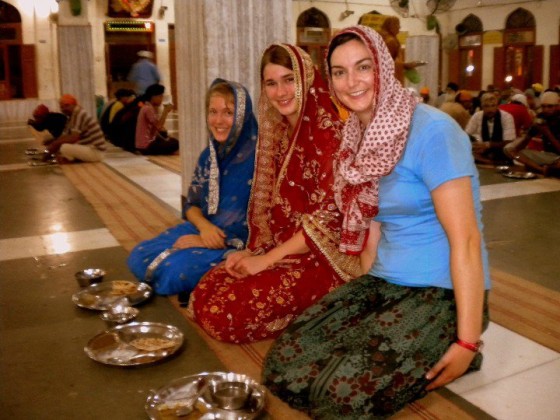I’M LOOKING OUT THE BARRED WINDOW of my second story apartment in Bangalore. I’m wearing my old saffron salware kameez I had tailored when I was in Delhi three years ago. The fabric sticks to my back in this heat. I listen to car horns across the road as women crouch to sweep the dusty gutters. The radio at the idly dhaba across the street plays a song in another language I don’t understand, but the female voice is ethereal. I squeeze my eyes shut. Never in my wildest nightmares did I think I would return to India.


I Never Wanted to Go Back to India. But in Returning, I Learned to See.
The first time I came here I spent three months doing anthropology research with a group of Tibetan refugees living in exile in Dharamsala. A friend warned me I’d feel “the rawness” and “sensory overload,” even though I was a seasoned traveler. I’d learned about Tibetan suffering in books and faintly recalled other historical atrocities on this “other” side of the world. But nothing prepared me for what I saw: bulging scars on a monk’s back from years of torture in solitary confinement, an aged woman’s story of crossing the Himalayas barefoot, and tales of murdered or missing family members. No textbook prepared me to learn about the partition of India and the 500,000 deaths that ensued, or what it would feel like being chased by a group of rowdy men shouting sexual assaults on a hiking trail. As tantalizing as Hinduism seemed in my world religion course back at the university, I wasn’t prepared to see faces melt off in an open fire pit during funeral cremation ceremonies along the Ganges River in Varanasi, nor was I ready to surrender my Western, twenty-something individualistic outlooks. India erupted my sheltered worldview, and I think amidst my suffering I resented India for that.
I blink, remembering what an existential mess I was when I returned to the US and how depression took over my life. I look through the iron bars on the window at the bustling scene below. A cow now stands obstinately in the road. Despite swearing I would never come back, I am here again for at least two months in this leg of my journey around the world. I know I am not the same. It’s time to give India another chance. Maybe I can reincarnate bravery and healing from the ashes of old fears and trauma.
I am hopeful, though some discomforts and annoyances are familiar and remind me of the past. I still don’t like darting across the road and dodging rickshaws, or the unidentifiable pungent liquids snaking through the broken up sidewalks. I have given up on being comfortable with blatant inequality and poverty thrust in my face, and the never-ending war in my heart and head of what to do when a homeless person approaches me with a tin can.
There were good things, I admit, as I observe. A man guides the cow out of traffic. I remember flickers of what I forgot to appreciate. There are the obvious answers: the food, the music, the ancient cultural heritage, and the people with their unrivaled hospitality. But there are also the sounds — the faint jingling of gold jewelry, the monk’s reverberating mantras—and the colors.
I smile. I can’t ignore the colors, especially the indigo saris, the emerald jewels, the red walls lined with cracking textures, and the bright yellow letters on buildings. I can’t dismiss these any more than the chalk art around the doorways, the marigolds paving the way for a wedding, or the overwhelming generosity of the people I meet here.
And there are the smells beyond the sewage: sweet smelling cinnamon, whiffs of masala and peppermint tea, perfumes from jasmine flowers at the temple, and savory wafts that come from the tandoori oven. I especially love the smell of hot dahl I can squish together with my fingers before I eat with my hand. These are some of the best smells I’ve encountered in my travels around the world.
I’m ready for a walk. I met a local friend yesterday at the library, and I think I will take her up on her invitation to visit her at her home. I linger at the window a moment, knowing I have two choices. I can note the bars lining the glass and see this as a kind of prison, a tribute to the past and testament to my stubbornness, hopelessness, and fears. I can also see past the bars and get out of the apartment to admire the orange blossoms on the Paras Pipal tree standing nearby. I can see each piece of the scene as contributing to the whole, and if I am feeling brave I might look closer to see my reflection in the hidden glass looking back at me, framing everything.